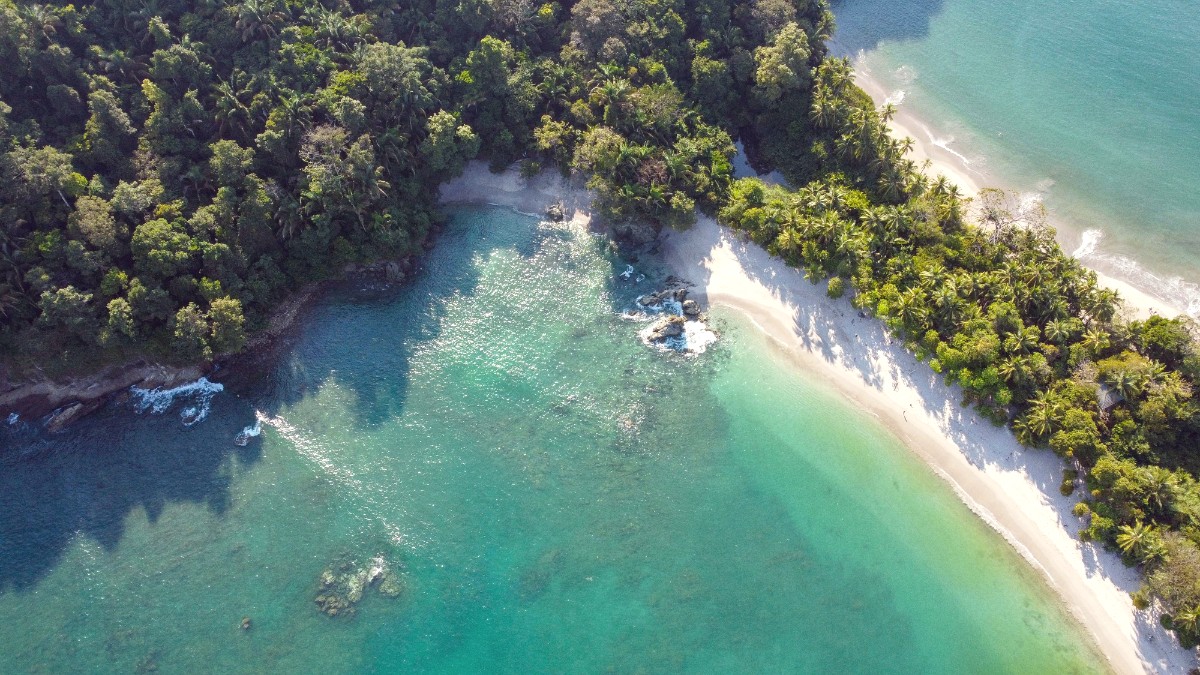
Central Pacific Coast, Costa Rica
The weather in Quepos remains warm year-round, but rainfall patterns vary significantly. The dry season, from December to April, offers consistent sunshine. Daytime temperatures range from 28°C to 32°C (82°F to 90°F). The clear skies are ideal for photography and uninterrupted beach days.
The wet season, from May to November, brings more frequent rainfall. Mornings often begin with clear skies, with afternoon showers or thunderstorms. September and October are the wettest months. Temperatures are slightly cooler, and humidity is higher.
A lightweight, quick-drying rain jacket is sensible for any time of year, as tropical showers arise unexpectedly.
Consider travel priorities like budget, crowd tolerance, and activity interests when choosing your visit period.
Mid-December to April
Abundant sunshine, clear weather, all services fully operational.
Peak crowds at attractions, highest accommodation and tour prices, reservations critical.
May-July and November
Fewer crowds, generally lower prices, lush green landscapes, active wildlife.
Afternoon rain showers possible, some smaller services might operate on reduced schedules.
August-October
Lowest prices, fewest tourists for intimate experiences, peak surfing conditions.
Daily heavy rains, remote areas less accessible, some operators might close.
Costa Rica sits outside the typical hurricane belt. Outer bands of Pacific storms, from August to October, bring increased rainfall and rough seas. Monitor local weather forecasts, especially for boat tours.
Earthquakes occur naturally in Costa Rica. Familiarize yourself with general earthquake safety procedures upon arrival.
Stay updated on changing conditions.
A light rain jacket is always a good idea.
Rainy season affects road navigability.
Check conditions before booking boat tours.
General procedures are helpful.
Most travelers experience a straightforward process for entering Costa Rica.
Costa Rica has a welcoming entry policy for many nationalities. Most travelers from the United States, Canada, European Union countries, Australia, New Zealand, and numerous Latin American countries do not need a visa for tourism stays of up to 90 days.
Prepare these documents before travel to facilitate entry.
No entry fees apply for tourists. Present your valid passport and proof of onward travel to immigration. An entry stamp in your passport shows your permitted stay, typically 90 days.
For general tourism in Quepos and Manuel Antonio, special permits are not typical. Manuel Antonio National Park entry requires a standard online ticket purchase.
Secure your spot.
Important for stay duration.
They handle permits.
Enjoy standard tourism.
Use certified services only.
Costa Rica, and Quepos notably, can be more expensive than some other Central American countries, but options cater to various budget levels.
The official currency is the Costa Rican Colón (CRC), symbol ₡. Exchange rates fluctuate, typically around ₡500-₡550 per 1 US dollar. USD is widely accepted in tourist areas, but you will receive change in Colones.
Daily budgets vary significantly based on travel style.
Travelers make their budget stretch further with smart choices in Quepos.
Preparation and awareness contribute to a healthy and safe Quepos journey.
The Yellow Fever vaccine is only for travelers from specific high-risk countries in South America or sub-Saharan Africa. Proof requires an International Certificate of Vaccination or Prophylaxis (yellow card). Yellow Fever vaccine
No other specific vaccinations are officially required for most travelers.
Dengue, Chikungunya, and Zika are present. Use Insect repellent with DEET or Picaridin, wear long sleeves and pants at dawn/dusk.
Mosquitoes are active at dawn and dusk.
Consistent repellent use is .
Traveler's diarrhea is common. Practice good food and water hygiene. Wash hands frequently, and consider bottled water or a portable filter for sensitive stomachs.
Good food and water hygiene is important.
Be cautious with street food.
The tropical sun is intense. Use high-SPF Reef-safe sunscreen, wear a Wide-brimmed hat and Sunglasses, seek shade, and stay hydrated.
Stay hydrated and reapply sunscreen often.
Seek shade during the hottest part of the day.
Quepos has a public hospital for emergencies and general care. Pharmacies offer advice for minor ailments. For serious conditions, transfer to a San José hospital might be needed.
| Service | Details | Contact/Notes |
|---|---|---|
| Emergency | Police, Fire, Ambulance | Dial 911 |
| Local Hospital | Hospital Max Peralta (public) | Quepos town |
| Pharmacies | "Farmacias" for remedies | Common in Quepos town |
Prepare a list of contacts and understand emergency procedures for a smoother trip.
Connects to police, fire, and ambulance services throughout Costa Rica.
For U.S. Citizens requiring consular assistance.
For Canadian citizens needing consular services.
Always have backups.
Keep a written list of emergency contacts at home (family, friends) separate from your phone.
Store photocopies or digital copies of your passport, visa (if applicable), and travel insurance policy information in a separate location from the originals. Consider emailing them to yourself or storing them in a secure cloud service. Leave copies with a trusted person at home as well.
Preparedness offers peace of mind.
Even docile-appearing animals like monkeys can bite if approached or fed. Do not feed or attempt to pet wild animals.
Be cautious around stray dogs or other domestic animals.
If an animal bites you, seek immediate medical attention.
Costa Rica experiences natural phenomena due to its geography. Stay informed and react appropriately.
These considerations enhance your safety and comfort during your journey.
Before your trip, consult your doctor or a travel clinic for personalized vaccination recommendations and health advice based on your medical history and planned activities.
The tropical sun can cause severe sunburn and heatstroke. Always wear high-SPF sunscreen, a wide-brimmed hat, sunglasses, and seek shade during the hottest parts of the day. Stay well-hydrated.
Drinking plenty of water is important to prevent dehydration, even if you do not feel thirsty. Consider using a reusable water bottle and refilling it often to reduce plastic waste.